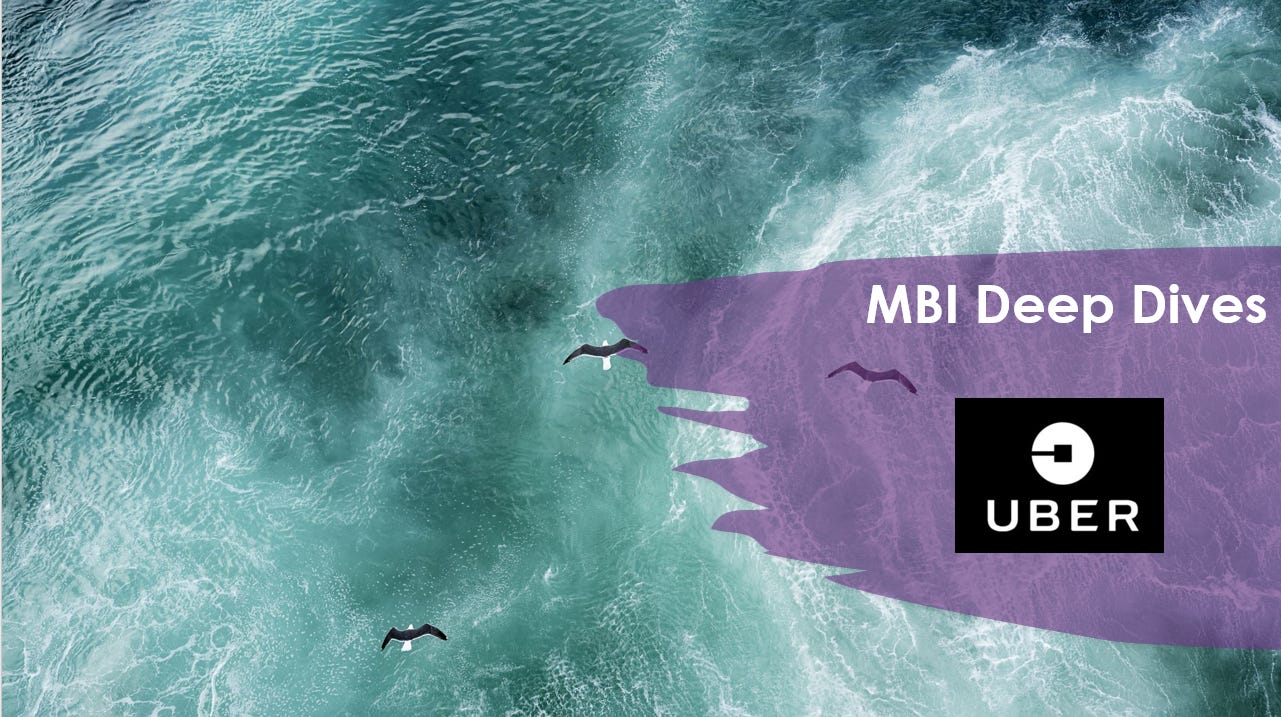I recently found this really interesting article doing a deep-dive on Uber: https://mbi-deepdives.com/deep-dive-on-uber/
It’s really incredible research, and I highly recommend you read it. For the time-strapped but still curious among you, I’ve summarized some of the key points which stood out to me into a 5-minute version below.
Enjoy!
Some key observations:
The top five cities namely NYC, SF Bay Area, LA, Sao Paolo and London contributed 24% of 2019 Gross Bookings.
Existing customers mostly young and affluent; hard to see Uber growing beyond that to middle-aged or low-income customers.
40%-60% of miles driven are deadhead miles (driving to find customers, i.e. no revenue)
60% of cost of revenue is for insurance (Head of Insurance said they would never self-insure); expensive due to lack of claims history. Another 20% of cost of revenue goes to payment processing.
Remaining cost of revenue mostly from Operations & Support, i.e. driver background checks. As churn is high, hard to see this going down.
Sales and marketing (S&M) spend = 30% of total revenue; mostly representing excess driver incentives (e.g. get $100 for completing 30 trips over three days or during morning rush hours)
S&M spend as a % of total revenue has not fallen despite operating for over a decade, as driver incentives are necessary to penetrate new markets; dominance in one market does not lend synergies when entering new markets (no economies of scale). Churn is also very high, with 68% of new drivers dropping out within 6 months, indicating high S&M spend as part of the business model.
Lack of operating leverage (most costs are variable costs), difficult to see how that could change over time due to the business model.
Highly commoditized on both ends - 34% of customers use both Uber and Lyft, while 66% of drivers use both Uber and Lyft.
Anyone with capital can start a new ridesharing app in a new region. No scale advantages; Uber has to compete on price and incentives with whoever the incumbent is in a new area.
Autonomous driving technology is a disadvantage rather than an advantage - drunk people & airport travellers will no longer need ridesharing.
Waymo (Google) can license its autonomous driving technology to anyone - diminishing Uber's potential advantage in the field. (30% of R&D spend was on autonomous driving)
$1.60/mile ride-sharing is 2x more expensive than $0.75/mile car ownership - Uber has to close that gap significantly in order to justify replacing car ownership.
Huge potential regulatory headwinds - particularly from airports (who make a big chunk of revenue from parking) and contractors (who may need to be classified as employees going forward).
Still battling PR nightmares despite 10 years of losses; implying path to profitability is harder than it looks.
UberEats is a flawed business model - lots of waiting and parking for the delivery person (i.e. lots of potential points of failure, leading to longer delivery times). Smelly cars can't be used for ride-sharing at the same time.
9.7% IRR (author's required rate of return = Uber's 6.7% 2027 bonds YTW + 3% equity risk premium) implies future TAM gains from replacing car ownership and competitive edge from autonomous driving - both of which are unlikely to yield expected benefits as seen above.
In summary, Uber's current stock price of $36 does not represent good risk:reward.





